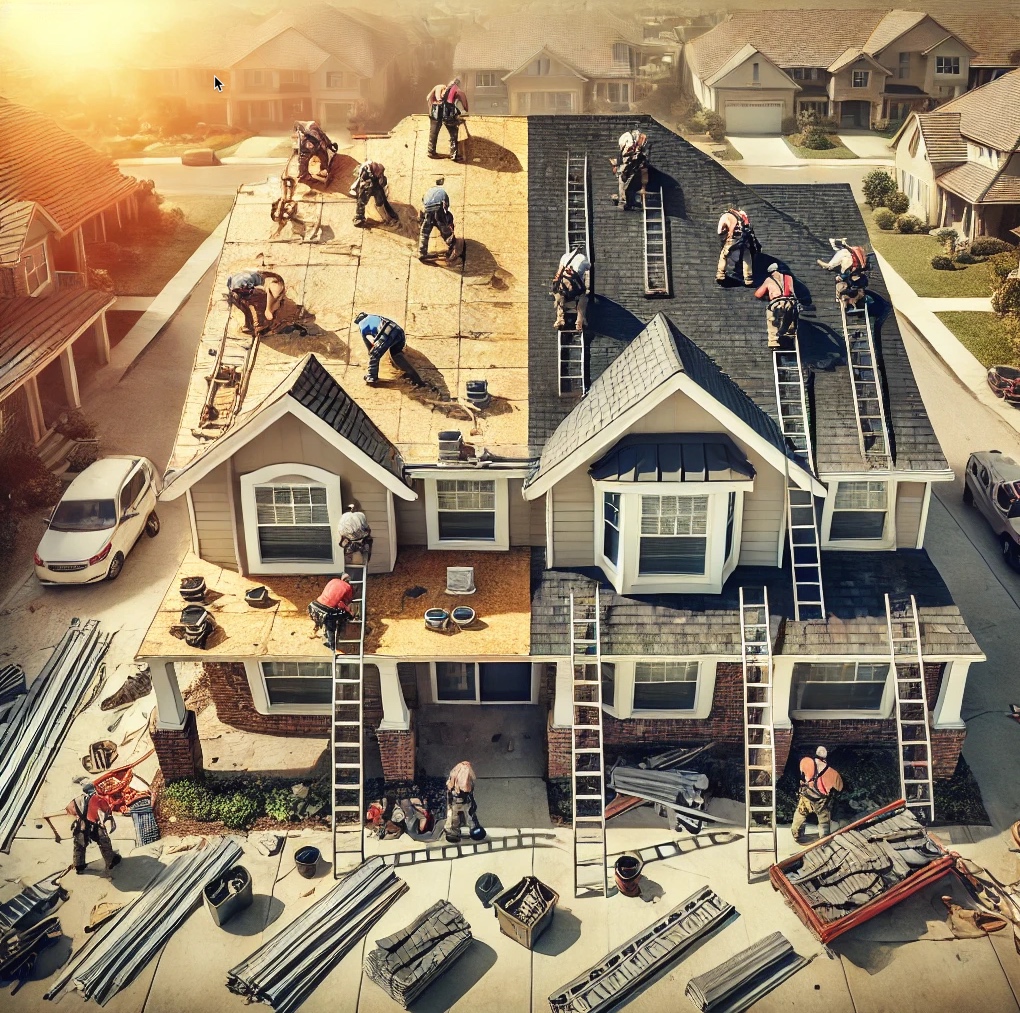Replacing your roof is a significant home improvement project that can feel overwhelming if you’ve never gone through the process before. Understanding each stage of the roof replacement can help ease your mind and allow you to prepare properly. In this step-by-step guide, we’ll walk you through what to expect during a roof replacement—from the initial inspection to the final cleanup—so you can feel confident and informed every step of the way.
1. Initial Roof Inspection
Before any work begins, a roofing contractor will perform a thorough inspection of your existing roof. During this assessment, they will look for signs of damage, check the condition of your shingles, and determine whether any underlying structural issues need to be addressed. This step helps provide an accurate estimate of the scope and cost of the project.
What to Expect: The contractor will walk you through their findings and give you a clear breakdown of what needs to be done. Be prepared to ask questions and discuss any concerns you may have.
2. Selecting Roofing Materials
Once the inspection is complete, you’ll work with the contractor to choose new roofing materials. Whether you’re replacing asphalt shingles, opting for metal roofing, or selecting another material, the right choice depends on factors like durability, energy efficiency, and your home’s aesthetic.
What to Expect: Your contractor will provide recommendations based on your climate, budget, and style preferences. This is the time to explore different options and understand their benefits.
3. Getting Permits and Scheduling
Before starting any roof replacement, your contractor will need to obtain the necessary permits. These permits ensure that the work complies with local building codes. After securing the permits, the contractor will schedule the replacement, often based on weather conditions and crew availability.
What to Expect: The contractor will handle permits, but the timeline for the project can vary depending on local regulations and weather. They will keep you updated on the schedule.
4. Preparation and Property Protection
On the day of the replacement, the roofing crew will take steps to protect your home and landscaping. This usually involves laying tarps around your property to catch debris, covering windows and siding, and setting up safety measures for the crew.
What to Expect: It’s a good idea to move vehicles, outdoor furniture, and other items away from the work zone to protect them from debris. The crew will take care of the heavy lifting when it comes to safeguarding your home.
5. Removing the Old Roof
The first major task is to remove the old roofing materials. This process involves stripping away old shingles, underlayment, and any damaged decking. If your roof has underlying structural problems, they’ll be addressed at this stage.
What to Expect: This part of the process can be noisy and messy. Be prepared for some commotion, but know that it’s a critical step in ensuring your new roof has a solid foundation.
6. Inspecting and Repairing the Roof Deck
After the old materials are removed, the contractor will inspect the roof deck (the wooden structure beneath your shingles). If any sections are damaged or rotted, they will need to be repaired or replaced before installing the new roofing materials.
What to Expect: The contractor will discuss any additional repairs with you before proceeding, as this can slightly increase the project’s overall cost and timeline.
7. Installing the New Roof
Once the roof deck is in good condition, the crew will install the new roofing materials. This involves laying down underlayment for added protection, followed by the shingles or other roofing materials you’ve chosen. Flashing around chimneys, vents, and skylights will also be installed to prevent leaks.
What to Expect: This stage can take anywhere from one day to several days, depending on the size of your roof and the weather. Your contractor will keep you informed of the progress.
8. Final Inspection and Cleanup
Once the new roof is installed, the contractor will conduct a final inspection to ensure everything has been done to code and to your satisfaction. Afterward, the crew will clean up the area, removing debris, stray nails, and any protective coverings they used to shield your property.
What to Expect: Make sure to walk around your property with the contractor to verify that all debris has been cleared and that your roof meets your expectations. Many contractors use magnetic tools to pick up nails and other metal pieces.
9. Warranties and Post-Installation Care
After the roof is installed and inspected, you’ll receive documentation on warranties. These warranties may cover both materials and workmanship, giving you peace of mind for years to come. Be sure to ask your contractor about any maintenance tips for prolonging the life of your new roof.
What to Expect: Keep all warranty paperwork in a safe place and follow any maintenance guidelines provided. Scheduling periodic inspections can help ensure your new roof stays in top shape.
A roof replacement is a big project, but understanding the process from start to finish can make it more manageable. By knowing what to expect, you can prepare your home, minimize stress, and ensure the job goes smoothly. At Liberty Roofing, we take pride in guiding homeowners through every step of the roof replacement process, ensuring a seamless experience from inspection to installation.
Ready for a new roof? Contact Liberty Roofing today for a free inspection and consultation.




